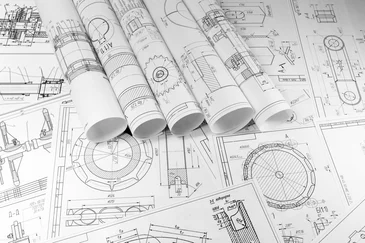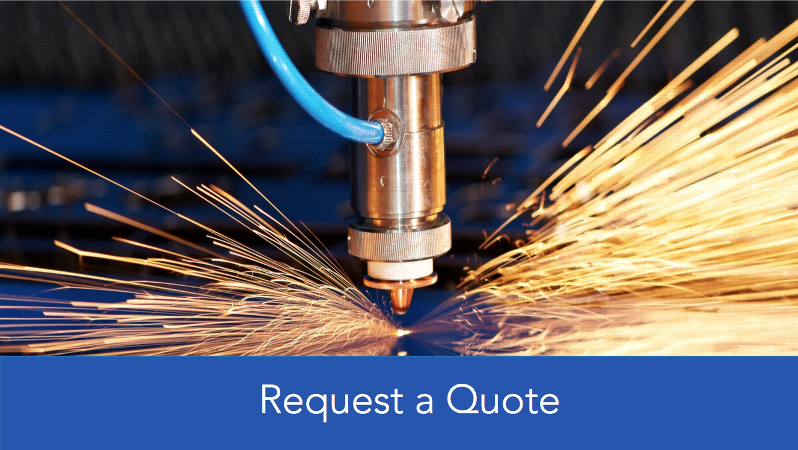 Designing products with manufacturing in mind is more than just a technical process — it's a mindset. When you start thinking about how a part will be made early in the design phase, you can avoid costly rework and delays down the line. CAMM Metals' CAD tools provide real-time feedback on Machined Parts, but even with that support, some design choices can still lead to complications. Here are a few common mistakes we see, along with tips on how to avoid them and save time and money throughout the product lifecycle.
Designing products with manufacturing in mind is more than just a technical process — it's a mindset. When you start thinking about how a part will be made early in the design phase, you can avoid costly rework and delays down the line. CAMM Metals' CAD tools provide real-time feedback on Machined Parts, but even with that support, some design choices can still lead to complications. Here are a few common mistakes we see, along with tips on how to avoid them and save time and money throughout the product lifecycle.
Not Understanding Machine Capabilities
One of the most frequent errors we see from customers is not fully understanding what machines their manufacturer has available. Before starting a project, it’s a good idea to visit the facility or at least ask for a list of equipment they use. This gives you insight into their capabilities, specialties, and materials they work with. For example, in sheet metal fabrication, knowing the size of the brake machine helps determine the maximum bend width. In CNC machining, understanding the machine’s precision allows you to set realistic tolerances. Getting this information early can help reduce costs and improve efficiency.
Including Hard-to-Machine Features
Some design elements are simply harder to manufacture than others. Thin-walled sections, deep threads, or complex 3D surfaces can all increase production time and cost. For instance, thin walls may break during milling due to vibration, and deep threaded holes might require special taps. If possible, avoid these features or find alternatives that make the manufacturing process smoother. The goal is to create a design that’s both functional and easy to produce.
Inadequate Part Specifications
When working with a new manufacturer, providing detailed specifications is crucial. A drawing isn’t just a visual guide — it’s a communication tool. Make sure to specify materials clearly, including certifications if needed. Don’t just say “aluminum†— mention the exact alloy, finish, and any required documentation. Clear details help the manufacturer understand your needs and deliver a better result without unnecessary back-and-forth.
Using Non-Standard Sizes and Materials
Even small design choices, like using non-standard hole sizes or unusual material dimensions, can add up in terms of cost and complexity. Consider whether your design could be adjusted to use standard sizes that your manufacturer already has on hand. This reduces setup time and avoids the need for custom tools or extra inventory. It’s always worth discussing with your manufacturing partner to see what options are available.
Final Thoughts
Manufacturing is a complex field, and these tips only scratch the surface. However, they’re valuable to keep in mind as you develop your designs. Remember, the best results come from clear communication and collaboration. Your manufacturer has the expertise — don’t hesitate to ask questions and take their advice seriously. Building a strong partnership from the start can lead to better outcomes and long-term success.
CAMM Metals | CT Metal Fabricator
Choosing the right metal fabrication partner is key to the success of your project. At CAMM Metals, we have years of experience and a deep understanding of the manufacturing process. We focus on delivering high-quality products while helping our clients achieve measurable cost savings. Whether you're working on a one-time prototype or a large-scale production run, we’re here to support you every step of the way.
 hbspt.cta._relativeUrls=true;hbspt.cta.load(2546019, 'e7d5e1de-1338-428a-a098-f6228bbbeb1d', {"useNewLoader":"true","region":"na1"});
hbspt.cta._relativeUrls=true;hbspt.cta.load(2546019, 'e7d5e1de-1338-428a-a098-f6228bbbeb1d', {"useNewLoader":"true","region":"na1"});
Radiant Tube,Radiant Heater Tube,Radiant Tube Heaters,Best Radiant Tube Heaters
Tuopu Industry(Jiangsu) Co., Ltd. , https://www.tuopu-industry.com
![<?echo $_SERVER['SERVER_NAME'];?>](/template/twentyseventeen/skin/images/header.jpg)